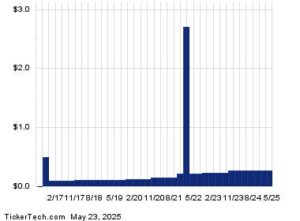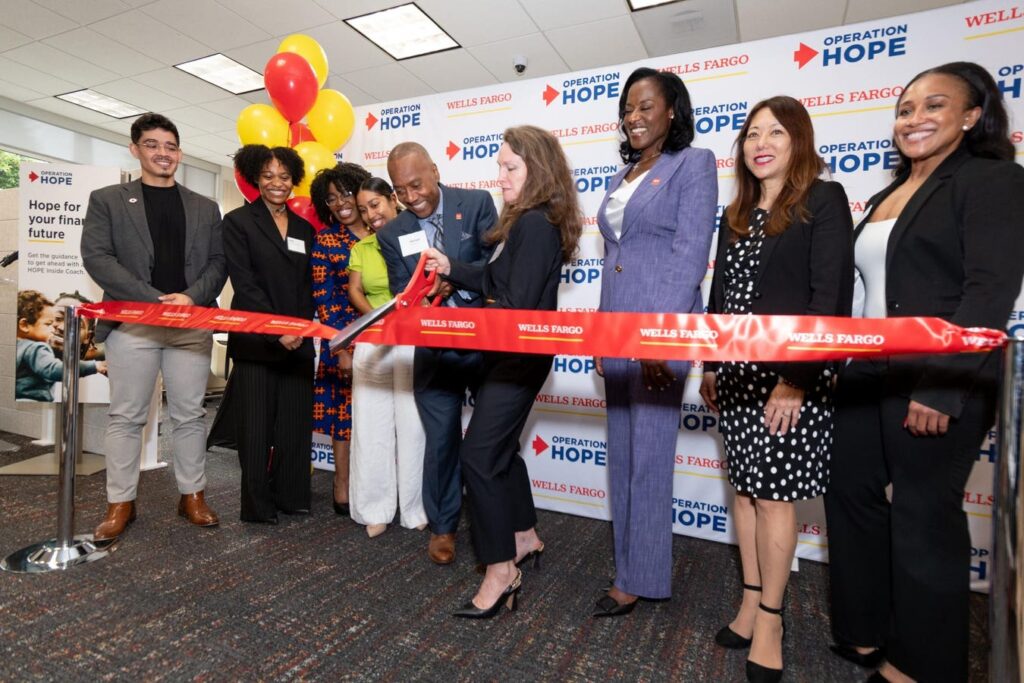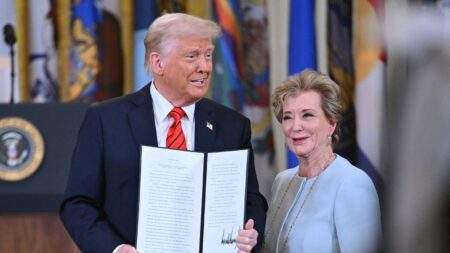Financial literacy in America has long faced a disconnect between education and application. While there has been improvement in financial education in the country, too many individuals, particularly in underserved communities, still lack the personal guidance necessary to translate knowledge into financial well-being. Recognizing this, Wells Fargo and Operation HOPE have partnered to offer free, in-person financial coaching within bank branches with the Hope Inside program.
What Is Hope Inside?
Hope Inside is a place-based financial coaching initiative created through a partnership between Wells Fargo and the national nonprofit Operation HOPE. Under this program, trained financial coaches are stationed directly within Wells Fargo branches to provide financial education and one-on-one coaching to members of the surrounding community.
The program is designed to help individuals with essential financial skills like budgeting and credit repair, and starting this May, small business development. It is entirely free of charge and is available to everyone.
“You don’t have to be a Wells Fargo customer to take advantage of this program,” says Greg Morishige, senior vice president at Wells Fargo, in an online interview. “There is no cost to take advantage of the service, but we want the service to be available to people in the community, people who are coming through our branches and may be in need of the assistance that Hope Inside can provide,” he adds.
Hope Inside is part of Wells Fargo’s Banking Inclusion Initiative, a 10-year project started in 2021 to provide improved access to affordable banking services and financial education resources to underserved communities.
Who Are The Coaches And What Do They Do?
The financial coaches are employed, trained, and managed by Operation HOPE, not Wells Fargo directly. This distinction helps preserve a nonprofit mission-oriented approach, while maintaining close collaboration with the bank.
All coaches are trained in foundational financial principles including credit, banking, and budgeting, but equally important is their training in emotional intelligence, empathy, and cultural competence. Coaches are not advisers selling products; they are mentors guiding people through financial decision-making. The approach is highly relational.
As Morishige notes, “You don’t want to have a format where you’re lecturing somebody. That’s not going to work.” According to him, people who engage in financial education come from a place of need, such as growing a family, facing credit denial, having confusion about financial systems, or starting over after immigration or other major life events.
“From what I’ve seen, all of these coaches have that intelligence to not just lecture about money and banking, but also to bring in the human element where they’re able to have these engaging conversations, have folks open up, and truly address whatever is their need,” Morishige explains.
Unlike other programs, Hope Inside is rooted in physical community locations. Coaches work on-site within Wells Fargo branches, ensuring their availability to walk-ins and scheduled appointments alike. This accessibility is key to building trust, especially in communities where skepticism of large financial institutions may run deep.
Expanding Financial Literacy Education To Small Businesses
In an event last May 6, 2025, Wells Fargo announced that the free financial coaching and other resources will be extended to small business owners. Aside from budgeting, debt reduction, and understanding bank accounts, people can now access guidance on how to form a business, manage its finances, and prepare loan applications, among others.
“We know that having access to trusted financial guidance is invaluable,” said April Schneider, head of Small and Business Banking at Wells Fargo, as quoted in a press release. “This kind of continued community investment showcases how important small businesses are to our communities and our commitment to help them thrive.”
“You know, with all of these, the reason that we do these events is to let people know that the service is available,” Morishige says.
What’s Next For Hope Inside?
Currently, there are 30 centers that serve 108 Wells Fargo branches and they have catered to over 11,000 clients. Additional markets will follow, with a focus on cities and regions showing the greatest levels of financial vulnerability. The company says they aim to have 50 Hope Inside centers by 2026.
Hope Inside represents a shift in how financial literacy is delivered, especially to those who need it most. Through free, in-person coaching offered within neighborhood bank branches, Wells Fargo and Operation HOPE are bringing education, empathy, and economic opportunity into the lives of thousands. As this initiative continues to grow, it offers a glimpse into what true banking inclusion might look like: not just access to accounts, but access to coaches who understand, listen, and help build a secure financial future one conversation at a time.
Read the full article here











